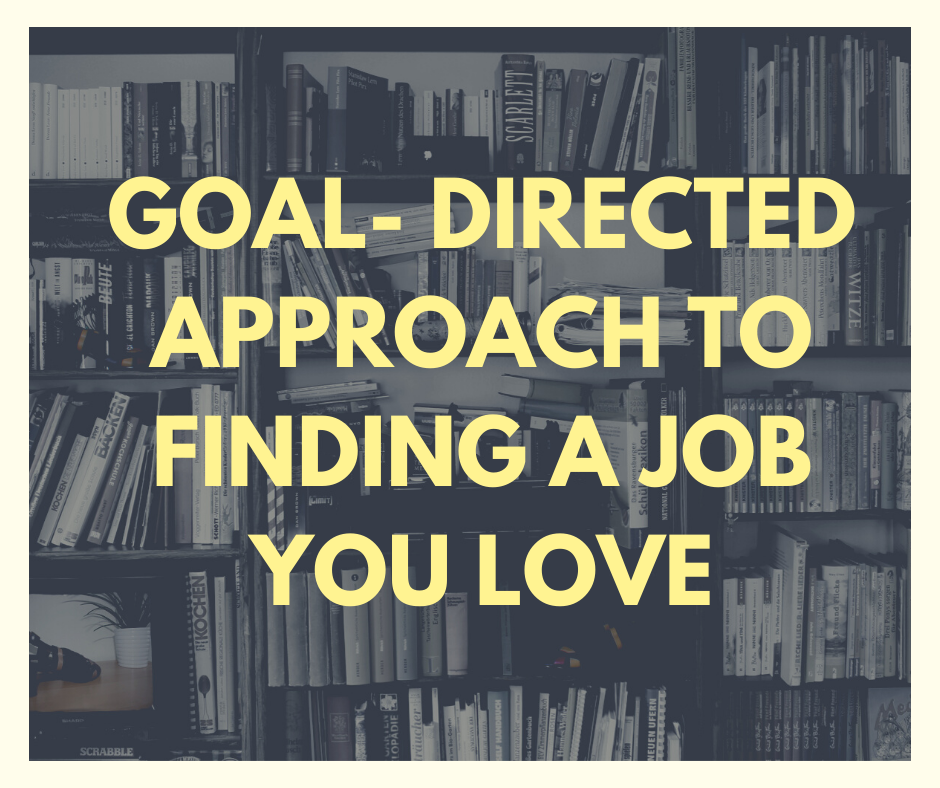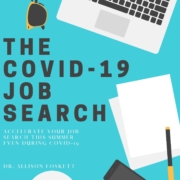There are many different job search strategies that you might adopt during your search for work, and in this previous blog post, I discuss some of the common techniques and their effectiveness. One of the most effective ways to land a fulfilling job – is to go right to the source. This is referred to as the goal-directed job search approach.
What if you could find a way to by-pass all the job-postings, the wait-and-see period after you apply, as well as all the networking meetings? This is the philosophy behind the goal-directed career search. Others have referred to this as the direct-approach.
This technique is all about going directly after your dream companies. No hoops, no guessing if anyone receives your resume. Instead, you make the bold move of chasing directly after your dream companies.
It involves you creating a list of your favourite companies that you’d be most interested in working at. Then, you develop a strategy for how to approach a hiring manager at that company.
The goal-directed approach is very different from an information interview in that you are very clear on your intent to explore opportunities for ways that you can add value to their company specifically.
You are looking for a job, but more than just a job. You are proposing a win-win opportunity for how the company will benefit by having your talent.
This approach may not be for everyone as it can create some anxiety and nervousness in a lot of us. Read this blog post for some suggestions on how you might manage those nerves, especially if you’re interested in utilizing this goal-directed approach.
At the same time, it truly is a way to increase your chances of landing your ‘dream’ job or at least a position that is aligned with your interests, values, skills and personality.
Steps to Using the Goal-Directed Job Search Approach
Step 1: Self-Assessment: What Interests You?
Make sure you’ve already done some type of self-assessment or done enough self-reflection so that you are fairly clear on the type of work that you are seeking. One assessment that gets at our interests is the Strong Interest Inventory Assessment which can be administered by psychologist or career counselling professional.
Some key components of this include identifying your: interests, accomplishments and skills, values, personality, lifestyle preferences, desired location, and more.
After you’re clear on what interests you, then you can re-frame this into why it should interest or benefit the company that you are contacting.
Don’t just ask for a job. Instead you want to be able to explain how you can help them.
Step 2: Conduct Research on Your Dream Companies.
Be sure to do your own research online about the companies that interest you. Read their websites in entirety, read about their team, mission, philosophy and anything that provides clues on how you might be an asset to this company. Go play and have fun – think big and don’t limit yourself too much during this brainstorming phase.
Step 3: Prioritize and Create a Dream List of Companies:
This is where your career search project really begins – you want to organize yourself and start creating a list of your ‘dream’ companies.
You might do this in either Excel, Word, a notebook, or you might even start a binder where you can print off key pieces of information about each company.
Regardless of how you proceed, you want a process in place that allows you to keep track of each step that you take. You might begin reflecting on which industries or career fields that you are most passionate about.
Next, create a written list of companies that you are serious about contacting. These are the companies where you truly believe you could see yourself working and making a difference.
Alternatively, – if your mind is drawing a blank, you might review a list of Alberta’s top employer’s (2020) https://www.canadastop100.com/alberta/.
Step 4: Identify a Key Contact at the Company
Now you want to identify a person who has the interest and power to do the hiring. I am not referring to an HR Manager. Instead, you want to find a name, email or phone number of someone that you can reach out to that will have a special interest in the hiring process.
The easiest way to locate such information is to go on to LinkedIn or Google, and search for terms like Director, Manager, Vice president, Supervisor, and search terms that reflect your area of interest or department. You might also browse through and keep old job postings from the companies if they contain contact names.
Alternatively, you may wish to call the company directly and ask for the contact information of “the manager in charge of the _____ department”. Smaller size or start-up companies often have their contact information listed directly on their website.
The problem with HR personnel is that they’re usually most interested in speaking with you when there is an advertised job opening. Hiring managers on the other hand anticipate the needs of the company much further in advance. This often means that connecting with them gives you access to more insider information and opportunities that HR might not be aware of.
You might also ask your friends, family members and co-workers if any of them are aware of who a good contact would be at this particular company of interest. Then, in your correspondence, you can clearly state, “I received your contact information from _____, and the reason I’m reaching out is…”
Step 5: Create a Friendly Introductory Email
Now that you’ve found a potential contact, take a few hours to draft up an introductory email. The goal of this email script is to introduce yourself and to share that you are in the process of making a career transition, and that you’re interested in learning more about how your skills and abilities might be an asset to this company.
Take your time with this email – several edits are a good idea. From the moment you send out your correspondence you are setting an impression which may determine your worth to the company.
For an example of a goal-directed approach email script click here.
Author: Dr. Allison Foskett, Registered Counselling Psychologist, Edmonton, Alberta
To learn more about my background and training as a registered psychologist, please visit my About Me page
If you’re interested in exploring career counselling services, career assessments, or individual therapy for a range of mental health concerns, please contact me for a free 15-minute phone consultation.










